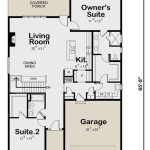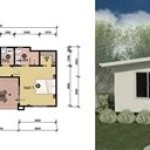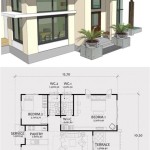How to Read Architectural Plans
Architectural plans are a roadmap for the construction of a building. They provide a visual representation of the building's layout, dimensions, and materials. Reading architectural plans is an essential skill for anyone involved in the construction or renovation of a building. ### Basic Elements of an Architectural Plan Architectural plans typically include the following elements: -Floor plans:
Show the layout of each floor of the building, including room sizes, doors, and windows. -Elevations:
Show the vertical facades of the building, including the height, width, and location of windows and doors. -Sections:
Show vertical cross-sections of the building, revealing the interior structure and materials. -Details:
Provide additional information about specific building components, such as cabinetry or trim. ### Symbols and Abbreviations Architectural plans use a variety of symbols and abbreviations to convey information. Here are some common examples: -Doors:
Represented by a square or rectangle with a line indicating the direction of the door swing. -Windows:
Represented by a square or rectangle with lines indicating the size and shape of the window. -Walls:
Represented by a thick line. -Dimensions:
Indicated in feet and inches, typically shown as a fraction. ### Understanding the Scale Architectural plans are drawn to a specific scale, which indicates how many units on the plan correspond to how many units in the actual building. The scale will typically be indicated on the plan itself, such as "1/4" = 1 foot. ### Interpreting the Plans Once you understand the basic symbols and abbreviations, you can begin to interpret the plans. Start by identifying the floor plan that corresponds to the floor you are interested in. Then, look for the elements that correspond to the specific area you are investigating. For example, if you want to find the size of the master bedroom, look for the room обозначение на плане этажа. The dimensions of the room will be indicated in feet and inches. ### Tips for Reading Architectural Plans Here are some tips for reading architectural plans: - Use a ruler or measuring tape to measure distances. - Pay attention to the scale of the plans. - Look for notes and specifications that provide additional information. - Don't hesitate to ask questions if you are unsure about something. ### Conclusion Reading architectural plans is a valuable skill for anyone involved in the construction or renovation of a building. By following these tips, you can learn to interpret plans and use them to your advantage.
The Basics How To Read Architectural Plans Watchdog Project Management

How To Read Architect S Drawings With Wikihow

Learn To Read Architectural Drawings Superior

How To Read A Floor Plan With Dimensions Houseplans Blog Com

How To Read Architect S Drawings With Wikihow

How To Read Architectural Plans Jda Lammin Architects

A Master Class In Construction Plans Smartsheet

Learn To Read Architectural Drawings Superior

How To Read Architectural Plans For Beginners

How To Reading Construction Blueprints Plans 1








